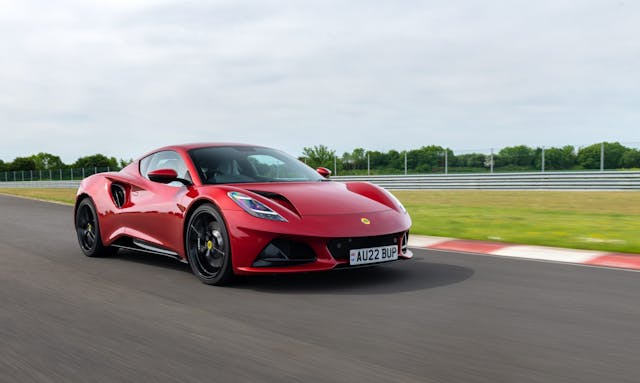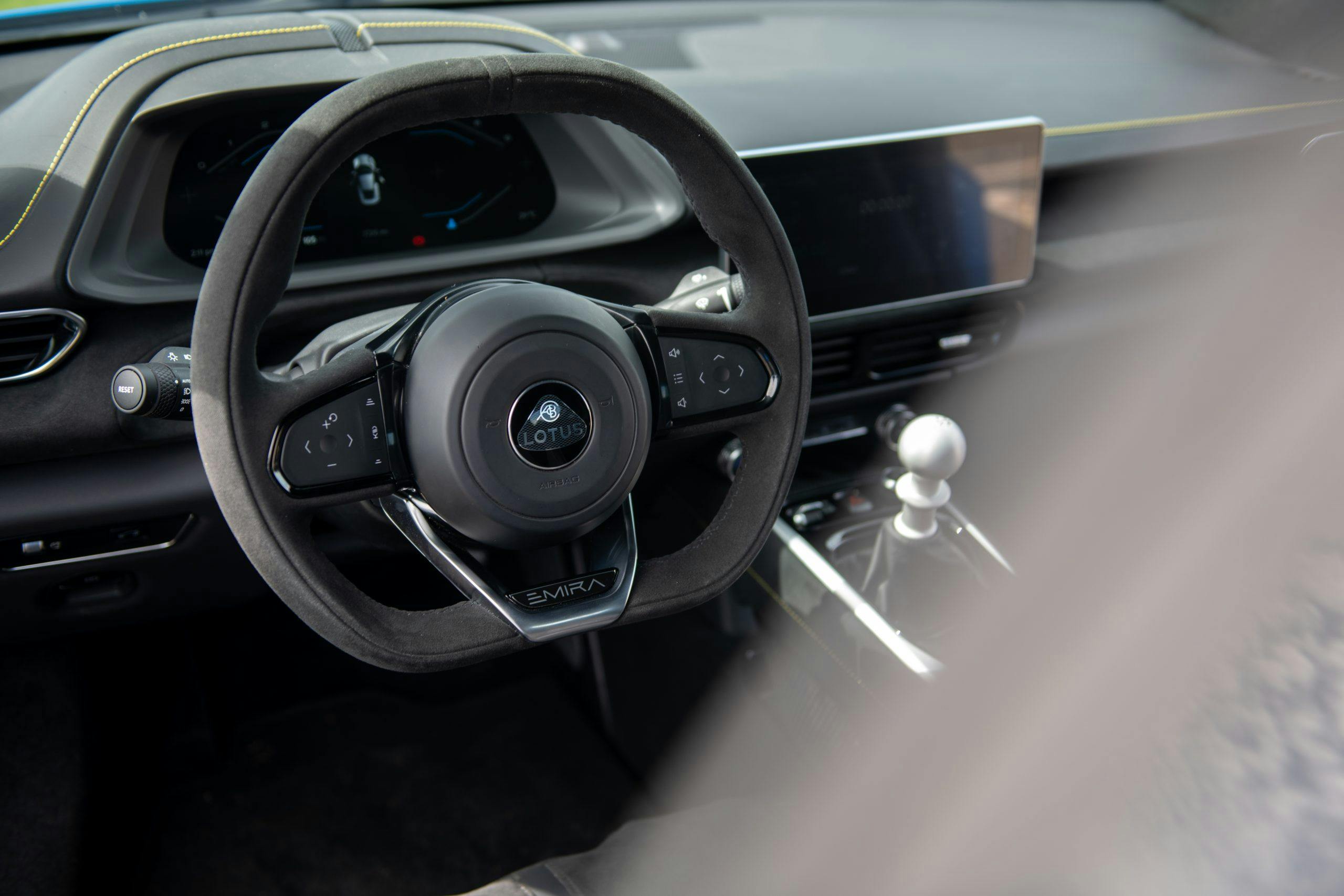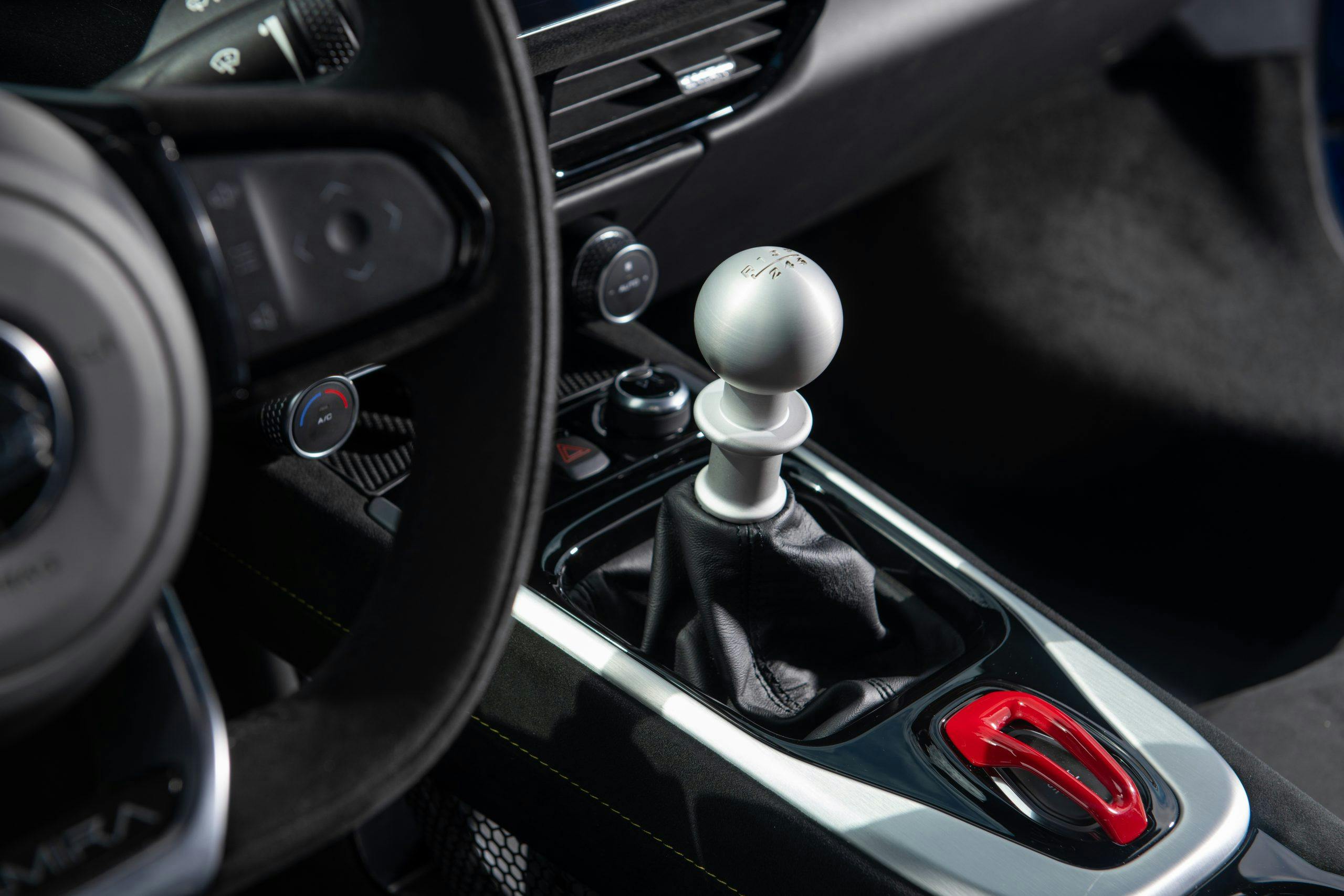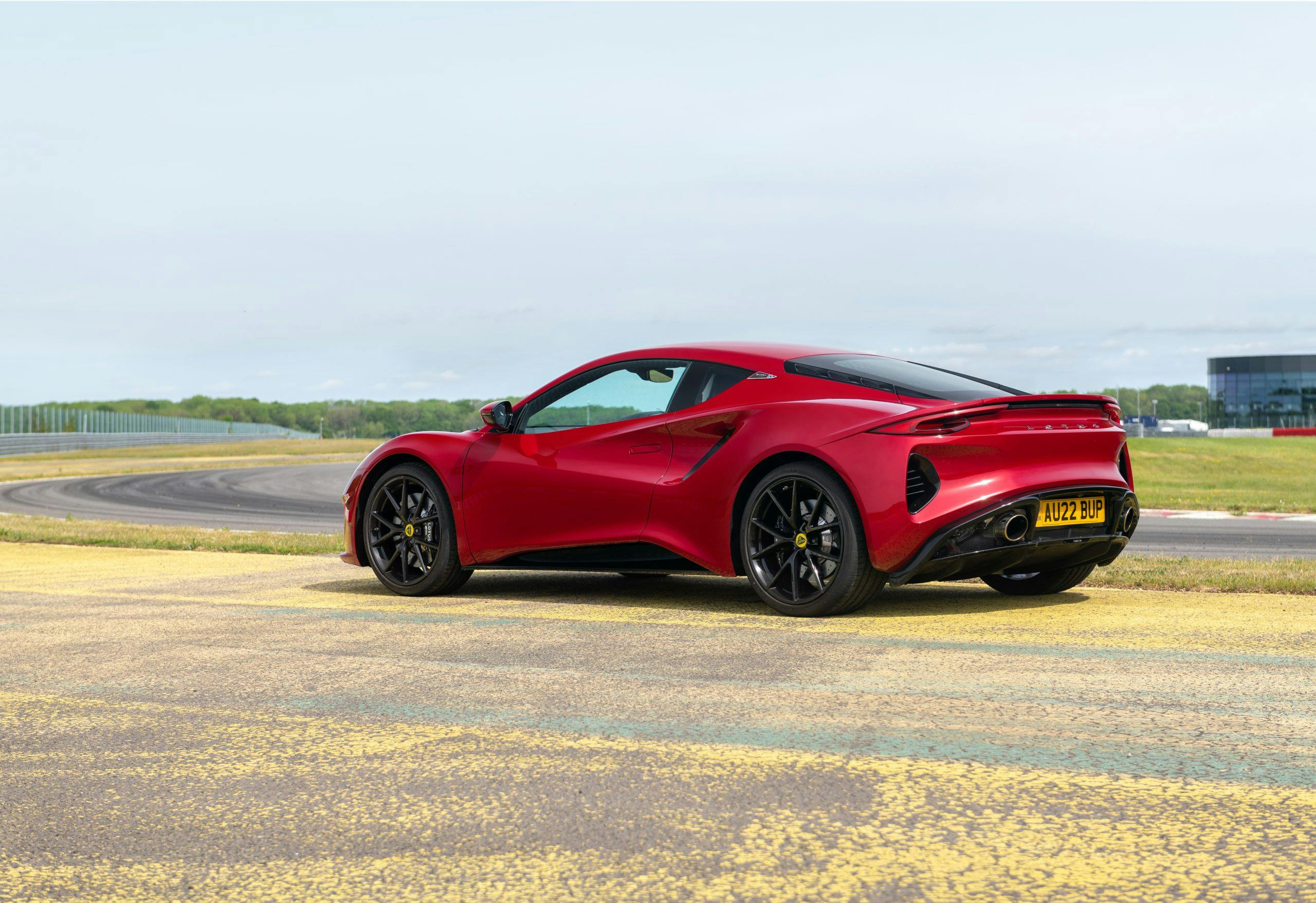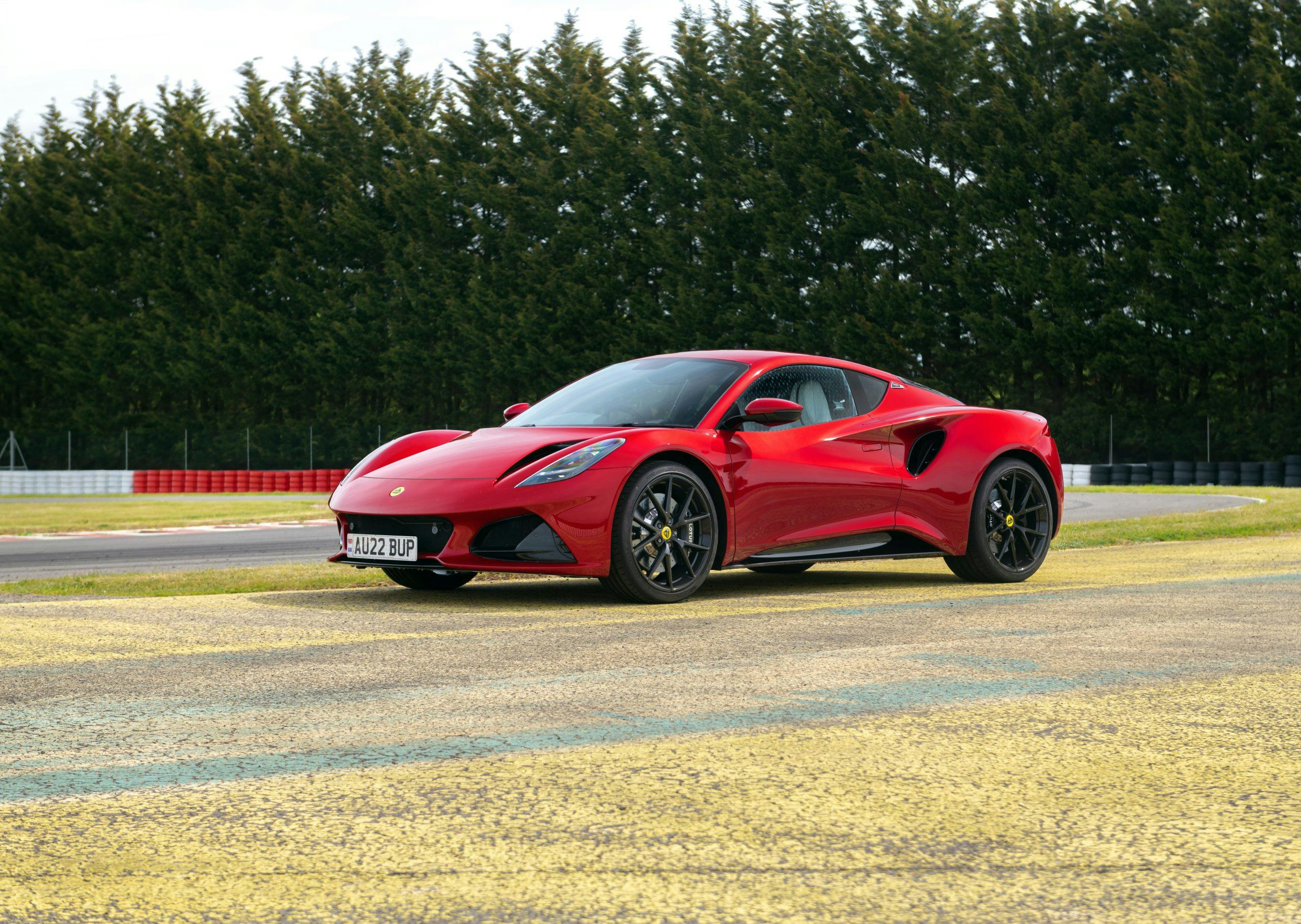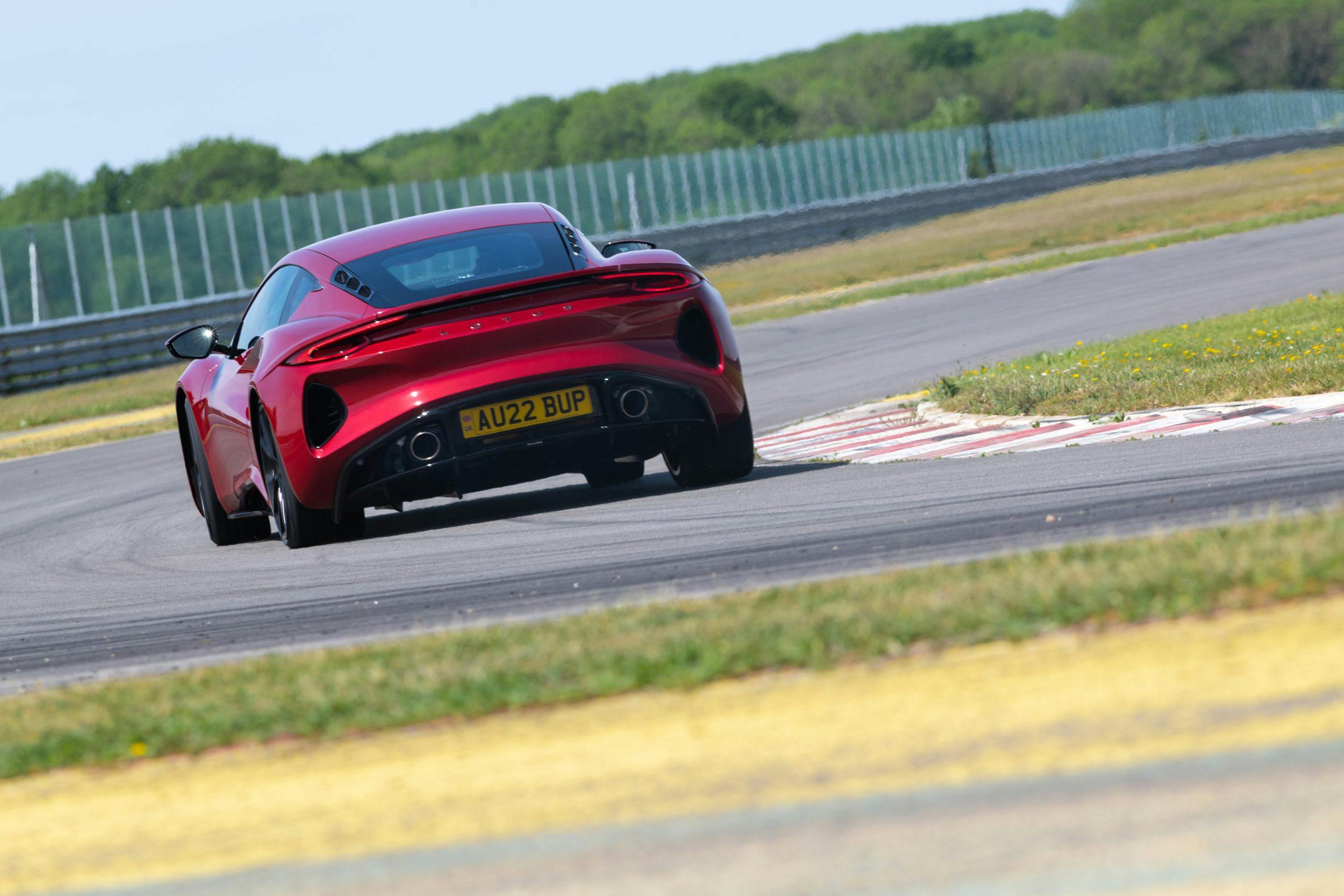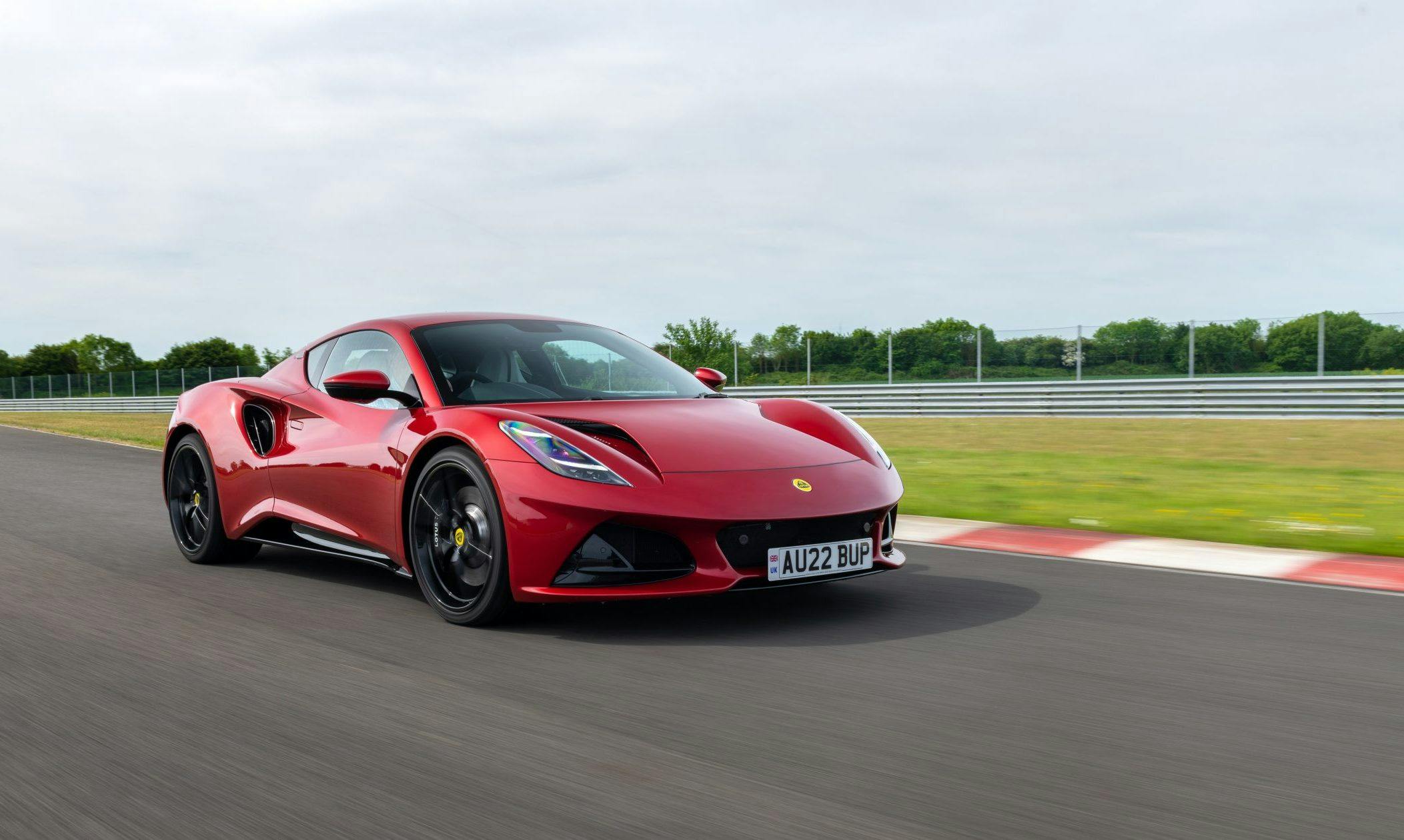Media | Articles
First Look Review: 2023 Lotus Emira
They are such great names: Elite, Elan, Esprit, Elise. But the question is this: Will that fab four be joined by one more to create a famous five of true Lotus icons before their time is finally up? If so, this is the only car that can do it—the new Emira, the last Lotus to be built with an internal-combustion engine.
New? Almost entirely. Know where to look and dig deep enough and you’ll find elements of the old Evora—they share a wheelbase and one of the two powertrains with which the Emira is available—but we shouldn’t let this delay us here. Beer and bread are both made from grain, but you’d hardly be likely to mistake one for the other.
The Emira is the most important new Lotus to be launched since the Elise in 1996. Its job is not just to make sure the era of the old-school Lotus goes out on as great a high as possible, but also to span the gap between Lotus’ current sports cars and the introduction of a new generation of electric ones. The company has no Elise or Exige to buoy sales if the Emira fails. This coupe walks the rope alone and without a net. To misquote NASA flight director Gene Kranz, who never actually said it in reference to Apollo 13 or anything else, failure is not an option.

So what do we have here? Lots of choices is the short answer. Each Emira customer gets a two-seat, rear-drive, mid-engined coupe with terrific styling by Russell Carr and an appropriately minimalist interior. But there are two engine options and no fewer than three transmissions. The car driven here is an Emira V6 powered by the familiar, 3.5-liter supercharged Toyota motor carried over from the Evora. It produces 400 hp which it runs through either a six-speed manual gearbox or an eight-speed conventional auto.
But there is also a four-cylinder Emira, which has the Mercedes-AMG 2-liter turbo mill found in the A45 S hot hatchback and its brethren. Detuned to 360 hp in this application (otherwise it would have more power than the V-6 Emira), the inline-four car is available only with a seven-speed, dual-clutch gearbox.
Marketplace
Buy and sell classics with confidence
Regardless of which engine you buy, you’ll have to choose between Touring or Sport specification. The former trim has suspension set up purely for the road and comes with Goodyear Eagle street tires. The latter has springs and dampers more tuned for circuit work and boasts Michelin Pilot Cup 2s.
The first batch of cars are so called “First Edition” machines and come fully loaded with goodies that would otherwise be options, including a limited-slip differential. The V-6-powered First Edition tested here and equipped with a manual gearbox, the Touring suspension, and the limited-slip diff costs £75,995 (just shy of $95K). The standard V-6 model will cost $82,900 (before destination) when the First Editions ($85,900) have all been built. The four-cylinder car starts at £59,995 (~$75K). In essence this means the base Emira is pitched against the Porsche Cayman S with its 2.5-liter four cylinder turbo motor, and the V6 model against the Cayman GTS reviewed here, which has a 4-liter naturally aspirated flat-six.
If there is one primary point of disappointment it is that this Lotus weighs more than that Porsche (3097 versus 3031). Not much, but if a Lotus can’t be lighter than any rival, one of the brand’s key unique selling propositions, perhaps the key one, is lost.

While weight is weight and physics is physics, the Emira does as well as you could hope in covering the fact it weighs almost twice as much as an original Elise. The Toyota motor has far more torque low down where you need it than the Porsche engine does, and with that supercharged throttle response, the performance is always convincing. It neither sounds as good nor revs so high as the German flat six, but its voice is still attractive, purposeful and distinctive. The gear change is more than adequate, though unlikely to send you around the ratios just for the joy of it.
The on-road handling is as good as it can possibly be. It starts with the basics: a fine driving position with plenty of head and leg room, good seats, and pedals perfectly placed for rev-matching between gears. Significantly, the steering is still (unfashionably) hydraulically assisted—and all the better for it. Perfectly weighed, accurate and full of feel, you’re never left in any doubt about conditions underfoot.
Best of all, the car is brilliantly damped. Soft springs allow the car to ride beautifully but a deftly controlled primary ride ensures that it never heaves or pitches even when driven fast over crests and into dips on official Lotus test routes.
The combination of the touring suspension and limited slip differential means a car in this spec is not at its best on the track. Neither one is the problem, it’s just an unhappy marriage. There is too much understeer on turn-in to slower corners, meaning you have to learn how to drive it cleanly, being conservative with entry speed, then gently using the power to neutralize the car. It will drift if provoked, but it is not a remotely natural state. I suspect that without the diff pushing the nose wide, the car would be much better balanced; alternatively, with the diff but with sport springs and track day tires, it would be far better tied down.
I’m not going to spend much time discussing the interior of the pre-production car I drove, for it was not to showroom specification, so time alone will tell whether Lotus really can build an Emira as well as Porsche can build a Cayman. But I liked the clean, pared-back approach, with two screens on which information is displayed, a row of ventilation controls, and very little else.
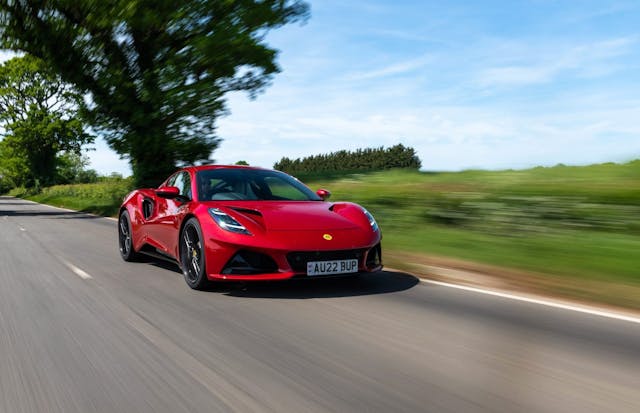
The Emira is an excellent car, far easier to live with than an Evora, better looking and technologically up to date. There’s still enough of that Lotus feel to woo diehards but, far more importantly, the looks, technology, ride, and refinement means the Emira should also appeal to people who have hitherto admired Lotus from afar but have been too nervous about livability to take the plunge. The Emira should resolve that quandry, and the two-year waiting list suggests that, so far at least, the plan is working.
It’s not a perfect car, nor even close, but what Lotus ever was? The Emira has character, ability, and sufficient practicality to suggest it will work in the real world like no Lotus in history. But it will take more time in an Emira to know for sure whether it has what it takes to turn the fab four into that famous five.
